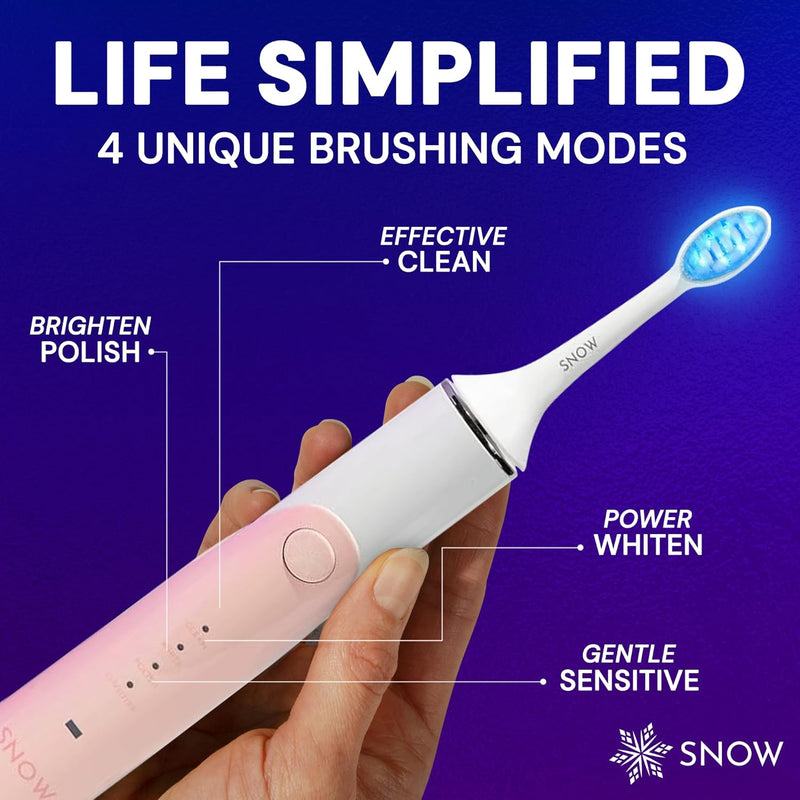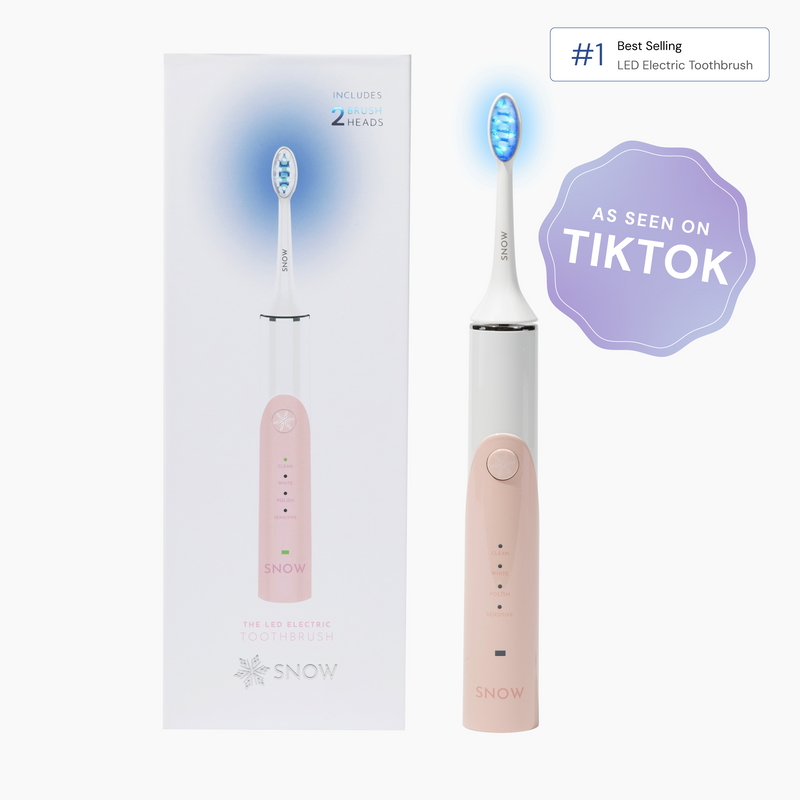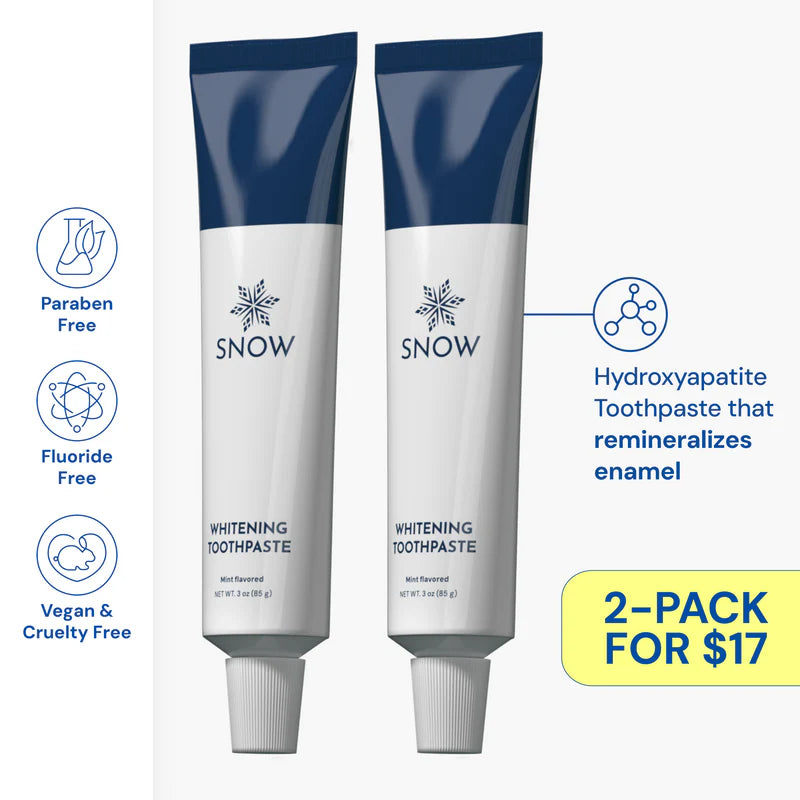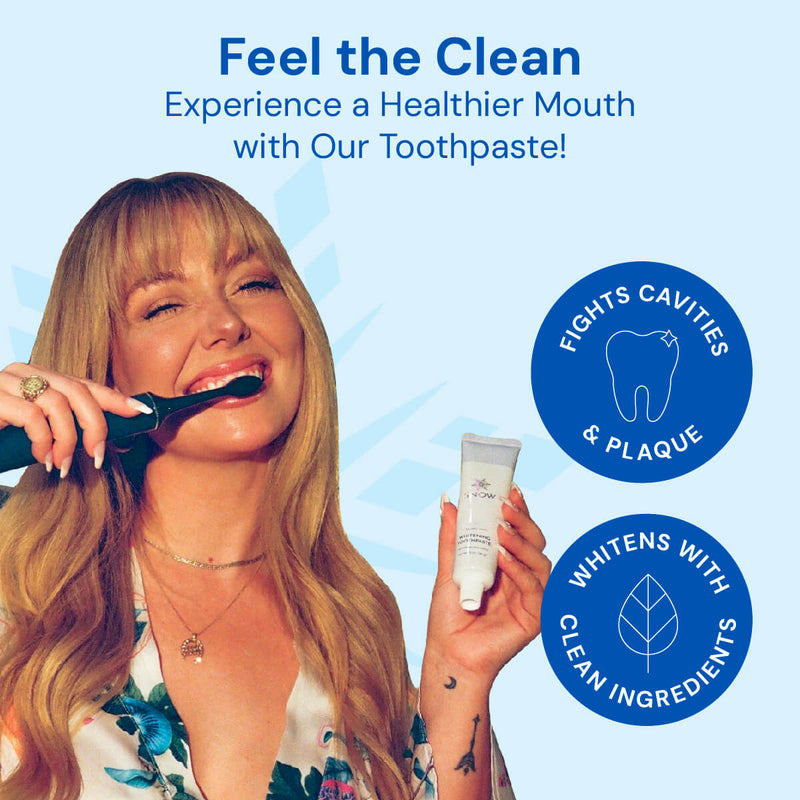Why does my toothbrush smell? Wonder no more. SNOW is here to provide answers and solutions. A smelly toothbrush can indicate various issues, from poor oral hygiene to bacterial growth.
In this article, we delve into the root causes of toothbrush odor and offer practical tips to keep your oral hygiene tools fresh and clean. Discover the best practices for maintaining your toothbrush, including proper cleaning techniques and when to replace it.
We'll also address common FAQs about toothbrush odor, leaving you with a comprehensive understanding of how to tackle this common dental dilemma.
Say goodbye to unpleasant toothbrush smells and hello to a refreshing brushing experience with SNOW's expert advice. Let's dive in and ensure your dental routine is as fresh as your smile!
What this article covers:- What's the Best Kind of Toothbrush to Use?
- Possible Sources of Toothbrush Odor
- How to Keep Your Toothbrush Clean
- How to Remove Odor From Your Toothbrush
- How Long Do Toothbrushes Usually Last?
- Smelly Toothbrushes FAQs
What's the Best Kind of Toothbrush to Use?
Choosing the right toothbrush is crucial for maintaining oral hygiene. At SNOW, we recommend our LED Teeth Whitening Electric Toothbrush for optimal dental care and brightening results.
Our LED Teeth Whitening Electric Toothbrush combines advanced technology with convenience to deliver a superior brushing experience.
With its oscillating bristles and powerful cleaning action, it effectively removes plaque and surface stains, promoting a healthier smile.

Manual Vs. Electric Toothbrushes
Both manual and electric toothbrushes can be effective in cleaning your teeth. However, electric toothbrushes, like our LED model, offer distinct advantages:
- Enhanced Features: Our LED Toothbrush comes with features such as built-in timers and pressure sensors, ensuring you brush for the recommended time and with the right amount of pressure for optimal results.
- Efficient Cleaning: The oscillating motion of our electric toothbrush ensures thorough cleaning, reaching areas that may be difficult to access with a manual brush.
Upgrade your dental routine with SNOW's LED Teeth Whitening Electric Toothbrush for a brighter, healthier smile.
Possible Sources of Toothbrush Odor
Discovering the source of your toothbrush's unpleasant odor is the first step toward resolving the issue. Let's explore some common culprits and how to address them:
Poor Oral Hygiene
Inadequate brushing and flossing can lead to the accumulation of bacteria on your toothbrush, causing it to smell unpleasant. According to the Mayo Clinic, poor oral hygiene is a significant factor contributing to bacterial growth.
Water Quality
Hard water with high mineral content can leave deposits on your toothbrush bristles, contributing to odor buildup.
Ensuring that you rinse your toothbrush thoroughly after each use can help mitigate this issue.
Dietary Habits
Consuming strongly flavored foods and beverages can leave residue on your toothbrush, resulting in an unpleasant smell.
Proper brushing technique and regular replacement of your toothbrush can help alleviate this issue.
Illness Or Disease
If you've been sick, bacteria and viruses from your mouth can linger on your toothbrush, leading to odor. According to the Mayo Clinic, conditions such as periodontitis can cause persistent bad breath and may contribute to toothbrush odor.
Addressing these factors can help eliminate unpleasant odors from your toothbrush, ensuring a fresher brushing experience.
How to Keep Your Toothbrush Clean
Maintaining proper hygiene practices is essential to ensure your toothbrush remains clean and free from unpleasant odors.
Here's how SNOW recommends keeping your toothbrush in optimal condition:
Rinse Your Toothbrush Frequently
After brushing, it's crucial to thoroughly rinse your toothbrush under running water to remove toothpaste and debris.
According to WebMD, this helps prevent the buildup of bacteria.
Let Your Toothbrush Dry Thoroughly After Each Use
To prevent bacterial growth, ensure your toothbrush dries completely between uses. Store it upright in a well-ventilated area to promote air circulation and drying.
Store Your Toothbrush Properly
Avoid storing your toothbrush in closed containers or covering it with caps, as this can trap moisture and promote bacterial growth. Instead, allow it to air dry naturally.
Replace Your Toothbrush Regularly
It's essential to replace your toothbrush every three to four months or sooner if the bristles become frayed. Old toothbrushes are less effective at cleaning and may harbor more bacteria.
By following these simple steps, you can ensure that your toothbrush remains clean and effective for maintaining oral hygiene.

How to Remove Odor From Your Toothbrush
If you've noticed an unpleasant odor emanating from your toothbrush, don't worry; there are effective ways to tackle this issue and restore freshness to your oral care routine.
SNOW understands the importance of maintaining a clean toothbrush, so here are some tips to eliminate odor effectively:
Soak Your Toothbrush
Soaking your toothbrush in antibacterial mouthwash or a solution of water and vinegar can effectively kill odor-causing bacteria.
The antibacterial properties of mouthwash help to disinfect the bristles, while vinegar's acidic nature helps neutralize odors.
Use Denture Cleaner
Denture cleaning tablets are another effective solution for sanitizing and deodorizing your toothbrush.
Simply dissolve a denture cleaning tablet in water according to the manufacturer's instructions and soak your toothbrush in the solution.
The cleaning agents in these tablets can help eliminate bacteria and odors, leaving your toothbrush fresh and clean.
Replace Your Toothbrush
If you've tried soaking your toothbrush and using denture cleaner without success, it may be time to replace your toothbrush altogether.
Over time, toothbrushes can accumulate bacteria and debris that contribute to unpleasant odors. By investing in a new toothbrush, you ensure that you're starting fresh with a clean and odor-free oral care tool.
Maintaining a fresh and clean toothbrush is essential for effective oral hygiene. By following these tips from SNOW, you can eliminate odor and ensure that your toothbrush remains a reliable tool for keeping your teeth clean and healthy.
How Long Do Toothbrushes Usually Last?
At SNOW, we understand the importance of maintaining proper oral hygiene, which includes knowing when to replace your toothbrush. The lifespan of a toothbrush can vary based on several factors:
Frequency Of Use
If you brush your teeth multiple times a day, your toothbrush will undergo more wear and tear compared to someone who brushes less frequently.
Maintenance
Proper care and maintenance of your toothbrush can extend its lifespan. Rinsing it thoroughly after each use and allowing it to air dry can help prevent bacterial growth and prolong its usability.

Bristle Condition
The condition of the bristles is a key indicator of when to replace your toothbrush. Over time, the bristles can become frayed, which reduces their effectiveness at cleaning your teeth.
Considering these factors, the American Dental Association (ADA) recommends replacing your toothbrush every three to four months or sooner if the bristles show signs of wear. This ensures that you are effectively removing plaque and bacteria from your teeth and gums, helping to maintain optimal oral health [3].
By following this guideline, you can ensure that your toothbrush remains an effective tool for keeping your smile bright and healthy.
Smelly Toothbrushes FAQs
Why does my toothbrush smell like bad breath?
A smelly toothbrush can be indicative of bacterial growth due to poor oral hygiene practices or lingering illness.
How do you know if your toothbrush is bad?
If your toothbrush emits a foul odor, has discolored bristles, or shows signs of wear and tear, it may be time to replace it.
What can I do to prevent my toothbrush from smelling?
Practice proper oral hygiene, rinse your toothbrush after each use, allow it to air dry, and replace it regularly to prevent odor.
Should I use a toothbrush cover to prevent odor?
Avoid using toothbrush covers or containers, as they can trap moisture and promote bacterial growth. It's best to let your toothbrush air dry.
What if my toothbrush smells even after following proper care?
If your toothbrush continues to smell despite following proper care practices, consider replacing it with a new one.
Can I use mouthwash to clean my toothbrush?
Yes, soaking your toothbrush in antibacterial mouthwash can help eliminate odor-causing bacteria [5].
Conclusion
Amidst the array of tips for combating smelly toothbrushes lies a subtle yet crucial message: oral hygiene is paramount.
From soaking toothbrushes in mouthwash to replacing them regularly, the emphasis on cleanliness reverberates.
But beyond odor, lies a deeper concern: maintaining oral health.
SNOW understands this importance, offering innovative solutions like the LED Teeth Whitening Electric Toothbrush. With its advanced technology and commitment to dental wellness, SNOW ensures not just freshness, but also optimal oral care.
So, take charge of your dental hygiene journey today, and experience the difference with SNOW's teeth whitening expertise.
If you want to learn more, why not check out these related posts:
- Toothbrush for Sensitive Gums
- Best Electric Toothbrush Gum Health
- Best Electric Toothbrush for Gum Care
- Which Electric Toothbrush Is Best for Gum Disease
- Best Electric Toothbrush for Gum Recession
- Best Toothbrush for Bad Breath
- How to Clean Toothbrush
- When to Change Toothbrush After Being Sick
- How to Clean Electric Toothbrush
- Does Electric Toothbrush Clean Better?
- Can Your Toothbrush Make You Sick?
- Cleaning Toothbrush with Vinegar
- When to Change Toothbrush After Strep
- Electric Toothbrush Hurts My Teeth
- Gums Hurt After Brushing with New Toothbrush



































































